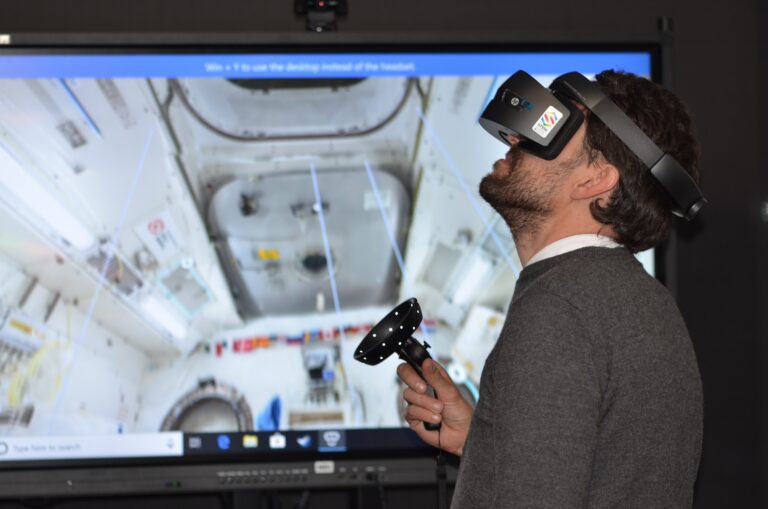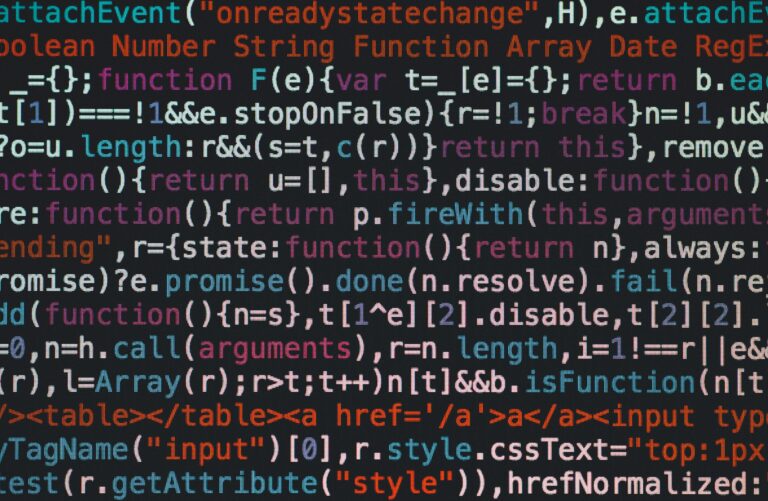Inquiry-Based Learning Across Disciplines
Inquiry-based learning (IBL) is a pedagogical approach with philosophical roots in constructivism—the idea that learners actively build their knowledge, rather than passively receiving it from a teacher. Problem-based learning, project-based learning, and case-based teaching are all forms of IBL (Aditomo, 2013). Although IBL varies from discipline to discipline, four key features are common to all: there is a central question for a learner to answer, research that produces data for them to analyze, and a chance for learners to report on their new knowledge.
In order for IBL to succeed, learners step forward to take active roles, while instructors take on the role of facilitators. As learners assume more active roles, they also have a chance to learn and practice essential skills they will need after graduation. Practitioners of IBL set learning goals for their students that include professional skills, research skills, and collaboration skills (Aditomo, 2013).
The implementation of IBL can vary widely. It may be as short as a single learning activity within a two-hour lecture, or stretch to a semester-long project. Learners could work independently, or in groups. Instructors can provide substantial support, or gradually fade scaffolding as learners develop the ability to direct their own work. The definition of “inquiry” itself may vary widely across disciplines (Levy, 2013), so representations of IBL will also be discipline-specific.
IBL is most closely associated with science education, but it can also be applied to other fields. I present three examples below: one in physical sciences (chemistry), one in business (marketing), and one in humanities (interdisciplinary). These examples are varied not only by their domain, but also in the duration, and the degree of inquiry.
PHYSICAL SCIENCES
IBL is most closely associated with science education, which is unsurprising, as the four aspects of IBL mimic the scientific method. Both begin with a question and research. Both may involve some form of an experiment. Students then generally analyze their observations and data, and apply scientific theories to explain natural phenomena. Research scientists do much the same, except that they may generate new scientific theories. Finally, both IBL and the scientific method end with a reporting step.
In this guided inquiry learning activity on soapmaking developed by Adam Johnson (2016), the activity is spread out over three class sessions. The key question for the activity is “How do you make soap?” Although the question is non-technical, the students will learn basic chemical principles through their exploration of this concept.
Since this activity is a guided inquiry, readings have been selected for the students. Before the first session, students are given a textbook reading assignment with guiding questions. The questions serve two purposes. First, they highlight important concepts and terms for them to understand, and second, they permit the students to practice relevant calculations on their own. There is also supplemental information critical for the IBL activity later. The first class session consists of a lecture and demonstration of soapmaking with canola oil and with coconut oil. These activities comprise the research portion of IBL.
The guided inquiry activity, and the beginning of the analysis portion, takes up the second and third class sessions. Students work in small groups of 3-5 through the questions, while instructor/facilitators circulate to check in on them. In order to answer the questions, students need to draw representations of chemical structures, and draw on the data given in the supplemental readings to make relevant calculations. They can also observe the textures of the two kinds of soaps that were made in the first session to see how it matches with theory. The session concludes with each group reporting out the results of their calculations. The instructor may clarify difficult concepts with a brief additional lecture.
This activity emphasizes first-year chemistry concepts through the lens of a relevant application: soapmaking. Additionally, students have the chance to work in groups, thereby facilitating peer learning and teaching.
BUSINESS
Case-based learning is a widely-used form of IBL in business education. In this method, students are presented with a real or fictitious case which contains an example of a business problem. Students then draw on and apply relevant models, codes, or principles to generate a possible solution to the problem.
As an example, consider Ilhem Allagui’s case study (2021) on the Qatari dairy company Baladna, which plans to start selling its products outside of Qatar. In the case, the question for the students to consider is whether the company should retain the Baladna brand in international markets, or whether it should create a separate brand identity for those products.
The text of the case provides information and data about the historical and geographic context, Baladna’s competitors, and market research. Interspersed throughout the case are nuggets of content, such as the definition of a brand, and the difference between standardization and adaptation strategies.
With this background information, students working in small groups are then able to tackle the overriding question: What should Baladna do as it expands into other markets? Second-year students are given a list of guiding questions to aid their discussion, while senior students are given only the overall question. Students analyze and discuss the available information to suggest a resolution.
The final part of the activity likely would be a report. While Allagui does not mention this aspect in her paper, business instructors often ask students to present their solutions and justify them with information provided in the case. This particular case lends itself to a class debate between the opposing viewpoints.
The value of the case study is its emphasis on the application of knowledge, as well as its open-ended nature. There is no single right answer, so students must learn to support their arguments.
HUMANITIES
The term “inquiry-based learning” has not been traditionally used in the context of post-secondary humanities education. However, if we consider the core tenets of IBL (question, research, analysis, report), many student research paper or essay assignments would fit the criteria. Such assignments are often completed individually, but social constructivist theory suggests that student learning could be further enhanced by working in a group.
Becky Boesch (2015) describes such a project as the culmination of a three-term first year course on human-environment conflicts. In the first term, readings and assignments are prescribed. In the second term, readings are still assigned, but students have more choice in how they complete assignments: they can choose a work to analyze from a large list. Finally, in the third term, the class selects six human-nature conflicts to explore. Based on their interests, students are assigned to small groups, each working on one of the selected conflicts throughout the term. A series of smaller assignments feeds into the final project. For example, each group selects readings for their peers, and then leads the class in a discussion on their issue. Each group member also writes an individual paper from the point of view of a stakeholder in the conflict.
All of these activities serve to help the students create their final project, which is to build a website about the issue they have identified. The website must present the conflict, introduce the stakeholders, include numerical data and analysis, and propose a resolution to the conflict. At the end of term, the groups present their websites in a class gallery.
The project is an example of open inquiry, since students are free to explore the aspects of the conflict that interest them the most. They develop their own research questions. However, they do not do so in isolation. Boesch specifically mentions that students have regular meetings with her, and that they have multiple opportunities to learn from their peers. Once their question has been established, students research the issue, and analyze it from different perspectives. They then synthesize their knowledge to suggest a resolution to the conflict, and produce a website as the result of their learning. The large scope of this project allows students to practice a variety of skills, including teamwork skills, visual literacy, and technological skills.
CONCLUSION
IBL can be beneficial in highlighting the discipline-specific processes of knowledge generation and knowledge application. Depending on the nature of the activity, there is also the chance for learners to practice and develop (at a minimum) problem solving, critical thinking, and teamwork skills. Using IBL is not a panacea: it requires a large investment of effort to prepare and facilitate the activities (and continuing effort to revise them), and learners may express resistance. Of course, no teaching method can be 100% effective. However, if you’re interested in fostering critical thinking and collaboration skills in your learners, consider incorporating an IBL activity into your teaching.
The author thanks Jennifer Hardwick and Nishan Perera for their expertise and fruitful discussions.
REFERENCES
Aditomo, A., Goodyear, P., Bliuc A.-M., & Ellis R. A. (2013). Inquiry-based learning in higher education: principal forms, educational objectives, and disciplinary variations, Studies in Higher Education, 38(9), 1239–1258. http://doi.org/10.1080/03075079.2011.616584
Allagui, I. (2021). Baladna Goes Global. Journal of Advertising Education, 25(2), 71–95. https://doi.org/10.1177/10980482211040507
Boesch, B. (2015). Inquiry-Based Learning as a Gateway for Exploration into Human Environmental Conflicts. In P. Blessinger & J. M. Carfora (Eds.), Inquiry-Based Learning for Multidisciplinary Programs: A Conceptual and Practical Resource for Educators (pp. 139-155). Emerald Group Publishing Limited.
Johnson, Adam. (2016). “Soapmaking Activity.” https://www.ionicviper.org/class-activity/soapmaking-activity Published 30 December 2016. Accessed 18 March 2022.
Levy, B. L. M., Thomas, E. E., Drago, K., & Rex, L. A. (2013). Examining Studies of Inquiry-Based Learning in Three Fields of Education: Sparking Generative Conversation. Journal of Teacher Education, 64(5), 387–408. https://doi.org/10.1177/0022487113496430



